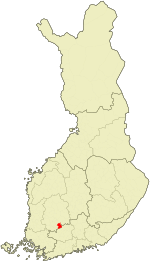Group
3 (G3 Less is More).
First Impressions about Finnish Education: surrounded by the winds of change
After
a week in Finnish lands coming from Brazil, our group has managed to understand
a little bit more about Finland, regarding to Finnish behavior, educational
system, social structure and the people
in the country. After some days of uncomfortable jet lag effects and the
necessary adaption to different climate conditions, we could experience a
significant week living in Hämeenlinna and five valuable days of lectures at
Häme University of Applied Sciences (HAMK).
Our
first impressions about Finnish Education are centered in some basic ethical
principles in Finland, as the nation became independent from Sweden and Russia
in the beginning of the 20th Century and finally could choose to be unique in
their way of life, even after suffering the effects of the 2nd World War. After being able to successfully host the
Olympic Games in 1952, the promotion of trust among Finnish citizens were
incorporated in the daily behavior of people, including the Educational System.
This was the very first principle that has impressed us in Finland. After that,
we've realized the Finnish Dream is about good school for everybody (equity and
quality), and the Finnish Way of Life addresses independence, resistance and
the ability to find their own way: "Only Dead Fish follow the
Stream".
In
our opinion, Finnish people believe in Education. They respect the whole
process of Education and they understand that learning is a construction road
and the teachers and the students need to be focused on that. In this regards,
the Finnish education is taken seriously since the kindergarten stage, and that
concern can be reflected in some assumptions like the mandatory qualification
of teachers in Master's Degree to be able to lecture. All people, regardless of
their social level, are entitled to the same good level education. Teaching is
based on less is more.
Besides
that, some other characteristics of the Finnish Educational System can be
presented below, such as:
a)
The student based education: the education is given throughout the learn
process based on the student, in their creativity, and their previous knowledge
about certain issues or subject.
b)
Training teacher: in Finland there is concern for the training of teachers, in
special for the technical school. All the teachers need to do a pedagogical
course to be able to teach.
c)
Individualization: Another important point is the commitment of the students in
their learning process and each person have the possibility to choose his or
her own way to learn. Since childhood, children learn and process information
received from books, teachers and the environment in a very particular way.
Some of them need to do manual contact (like educational toys), some need to
hear or see or read many times a text until it absorbed by their minds. When
they grow up, these characteristics remain with the person, and it is part of
teacher work to know how handle it for each one. Do lectures in only one method
and expect the same understanding for all students could bring some of them to
a failure feeling, which is bad. Part of our job as teachers is to recognize
them as individuals belonging to a group and the teaching approach should
consider all the spectrum of learning abilities. Included with this, the
assessment also should not be performed in a widespread way, avoiding unfair
evaluations between them.
e)
Teachers are autonomous: No one could understand more the students than their
own teachers. The general educational pattern comes from Finnish Government,
but the daily approach is done by teachers, who has freedom to choose
educational methods and the learning timing. In that way, classes can be
conducted differently regarding their own characteristics and needs.
f)
Use of technology: the use of technology is a reality in Finland, but there are
some immigrant digital teachers and then
they have difficult to use this resource in their classes.
We
also notice the importance of intervals between activities. When students come
back to class after a short period of break, it seems they are able to pay more
attention to the lectures. The interval is also important to make stronger the
relationships between students and the teachers.
Summary in Portuguese
A
Finlândia é um país nórdico conhecido por sua excelência em Educação. Após a
sua independência em 1917, o país optou por trilhar um caminho pautado na
ética, o que promoveu um sentimento de confiança entre os filandeses,
refletindo diretamente em seu Sistema Educacional. Com um sonho baseado em uma
boa escola para todos, a Finlândia investiu em igualdade e qualidade de ensino,
levando sua população a acreditar na educação. Todas os finlandeses,
independente de seu nível social, têm direito a um ensino gratuito de
qualidade. Esse investimento é percebido desde os níveis iniciais de ensino
(jardim de infância), em que todos os
professores necessitam ter Mestrado em Educação, acreditando sempre que
"menos é mais". Como princípios norteadores da educação finlandesa
temos o estudante como foco do processo, o investimento na formação e na
autonomia dos professores, a percepcção da importância da indivudualização na
aprendizagem e o uso de tecnologia a favor do ensino. O somatório dessas características tem colocado a Finlândia entre os principais países em ensino de qualidade.











